SOCR EduMaterials Activities Central Limit Theorem Chi square examples
From Socr
(Difference between revisions)
Create90215 (Talk | contribs) |
Create90215 (Talk | contribs) |
||
| Line 43: | Line 43: | ||
<center>[[Image: SOCR_Activities_Normal_Christou_example5_bc.jpg|600px]]</center> | <center>[[Image: SOCR_Activities_Normal_Christou_example5_bc.jpg|600px]]</center> | ||
*c. i. <math>X \sim N(.00032,.00192)</math> | *c. i. <math>X \sim N(.00032,.00192)</math> | ||
| - | ii. .0074 | + | ii. <math>P(\overline{X}>.005)=.0074</math> |
<center>[[Image: SOCR_Activities_Normal_Christou_example5_cc_ii.jpg|600px]]</center> | <center>[[Image: SOCR_Activities_Normal_Christou_example5_cc_ii.jpg|600px]]</center> | ||
iii.One day's return is more likely to be greater than .007. 0.21 vs. .00022 | iii.One day's return is more likely to be greater than .007. 0.21 vs. .00022 | ||
Revision as of 21:40, 14 May 2007
- Answer:
- a. false, the standard deviation of the sample mean is
 . Thus as the sample size increases, n increases, and as n increases, the standard deviation decreases.
. Thus as the sample size increases, n increases, and as n increases, the standard deviation decreases.
- b. True
- c. False, standard deviation of the sample mean is

- d. True, the standard deviation of the total of a sample of n observations is
 ; but the standard deviation of the sample mean is
; but the standard deviation of the sample mean is  Unless n is one, the standard deviation of the total of a sample of n observations exceeds the standard deviation of the sample mean.
Unless n is one, the standard deviation of the total of a sample of n observations exceeds the standard deviation of the sample mean.
- e. False, let's assume σ = 2 and n = 2. In this case, the z-score for
 would be -2.828 while the z-score for P(X > 4) would be -2. P(Z > − 2.828) > P(Z > − 2). Therefore the statement is false.
would be -2.828 while the z-score for P(X > 4) would be -2. P(Z > − 2.828) > P(Z > − 2). Therefore the statement is false.
- Answer:
- a. Failed to parse (syntax error): P(X \ge 1000)= P(X=1000)+P(X=1001)+....+P(X=1500)= (1500 \choose 1000) \times (.7)^1000 \times (.3)^500 + (1500 \choose 1001) \times (.7)^1001 \times (.3)^499 + ...+(1500 \choose 1500) \times (.7)^1500 \times (.3)^0 = \summation (\1500 \choose X) \times (.7)^X \times (.3)^1500-X
- b. We can use the normal approximation to binomial:
 and
and 

- Below you can see a snapshot for this approximation:
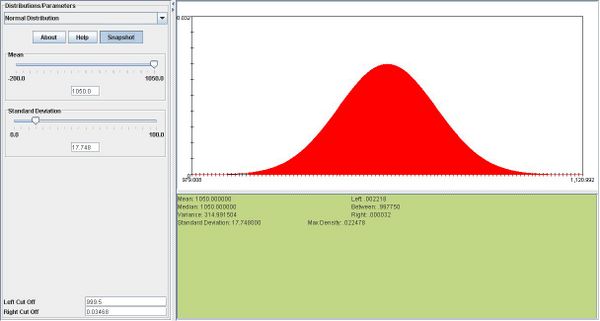
- Answer:
- a.

- Below you can see a snapshot for this part:
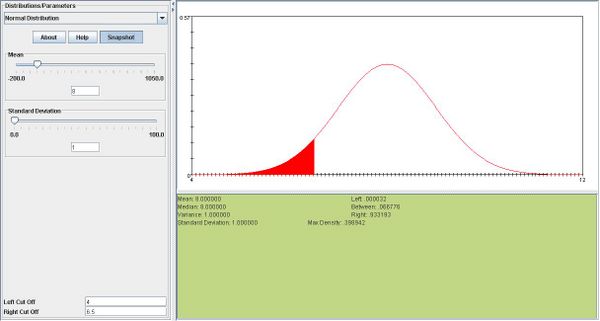
- b. ??
- c. The central limit theorem states that the sample mean approaches the normal distribution as the sample size gets bigger. Usually, if
 we can assume that the sample mean approaches the normal distribution. In this case n = 400. Therefore n satisfies the requirement of a large n.
we can assume that the sample mean approaches the normal distribution. In this case n = 400. Therefore n satisfies the requirement of a large n.
- d.
 According to the snapshot below, the middle 80% of this distribution is (6.721,9.279). Therefore w = 8 − 6.721 = 1.29
According to the snapshot below, the middle 80% of this distribution is (6.721,9.279). Therefore w = 8 − 6.721 = 1.29
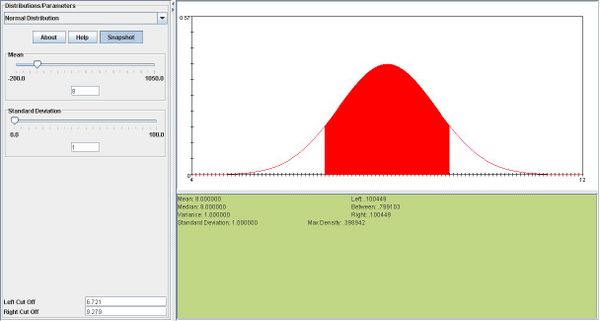
- e.
 In this case,
In this case,  We know that P(T > b) = .975.So now we need to find the 97.5th percentile of this distribution using SOCR. According to the SOCR snapshot below, the 97.5th percentile of this distribution is 3984. Therefore b=3984.
We know that P(T > b) = .975.So now we need to find the 97.5th percentile of this distribution using SOCR. According to the SOCR snapshot below, the 97.5th percentile of this distribution is 3984. Therefore b=3984.
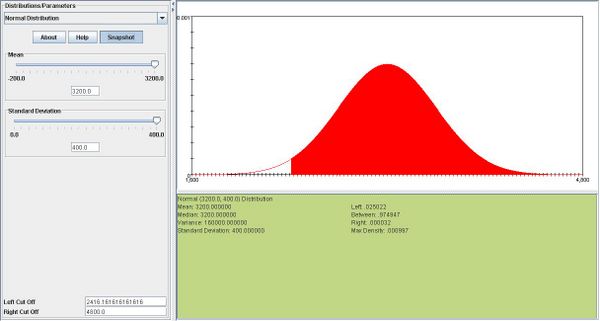
- Answer:
- a.
 . In this case,
. In this case,  .
.
- b. We can find the answer using SOCR. The answer is 0.004032. Please see snapshot below:
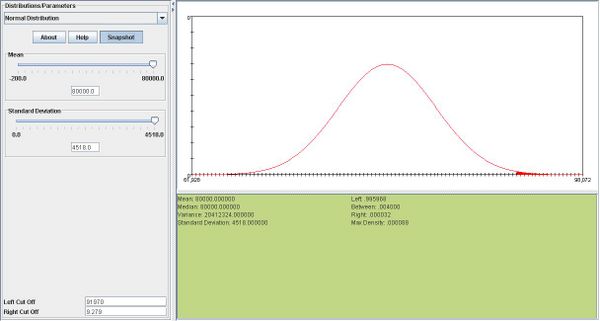
- c. We can find the answer right away using SOCR. Please see snapshots below:
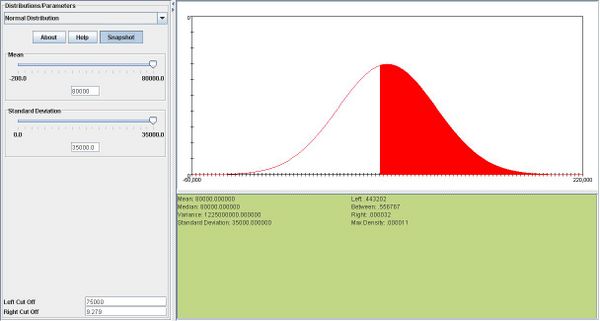

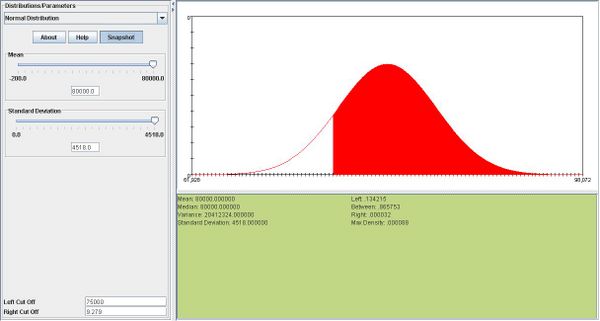
- The probabilities are 55.6% for one hour vs. 86.6% for sample mean. Therefore the sample mean is more likely to be greater than 75000 hours.
- Answer:
- a. According to the SOCR snapshot below, the 75th percentile is 0.006115.
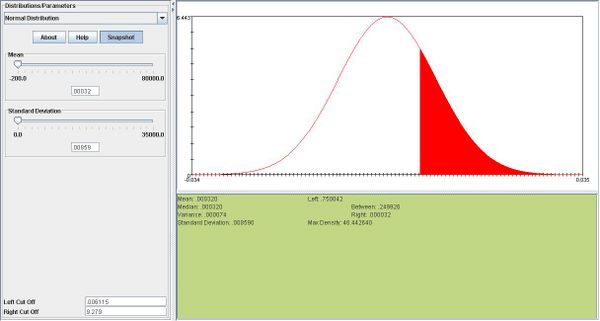
- b.P(X > .01) = .13.We can see this in the snapshot below:
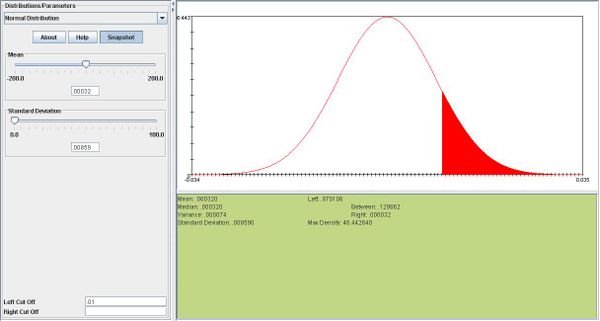
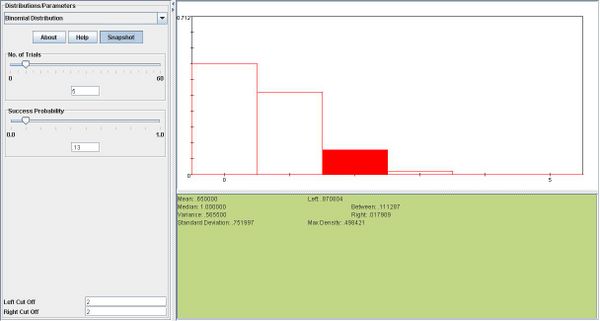
- c. i.

ii.
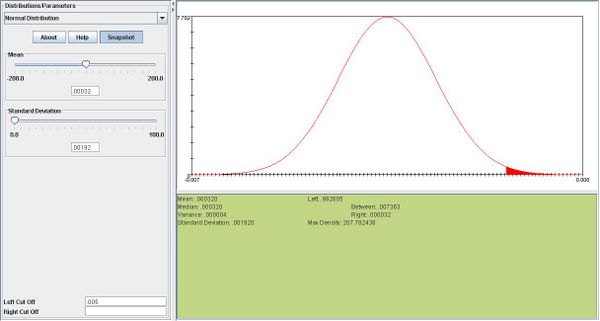
iii.One day's return is more likely to be greater than .007. 0.21 vs. .00022
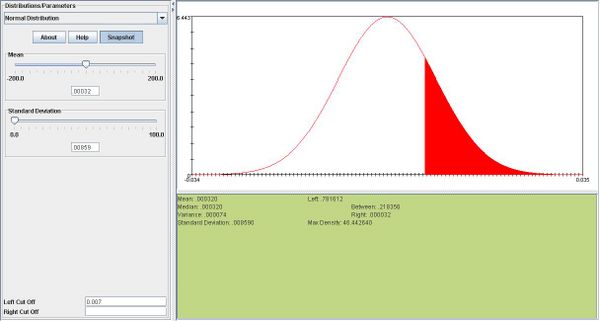

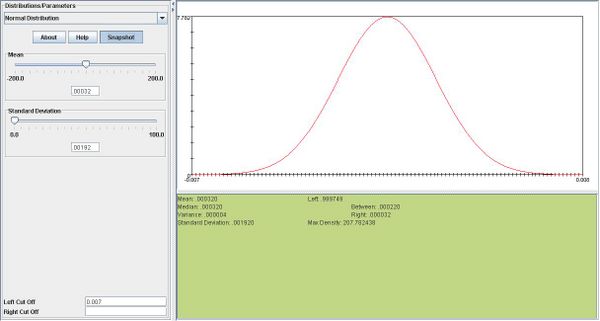
- Answer:

